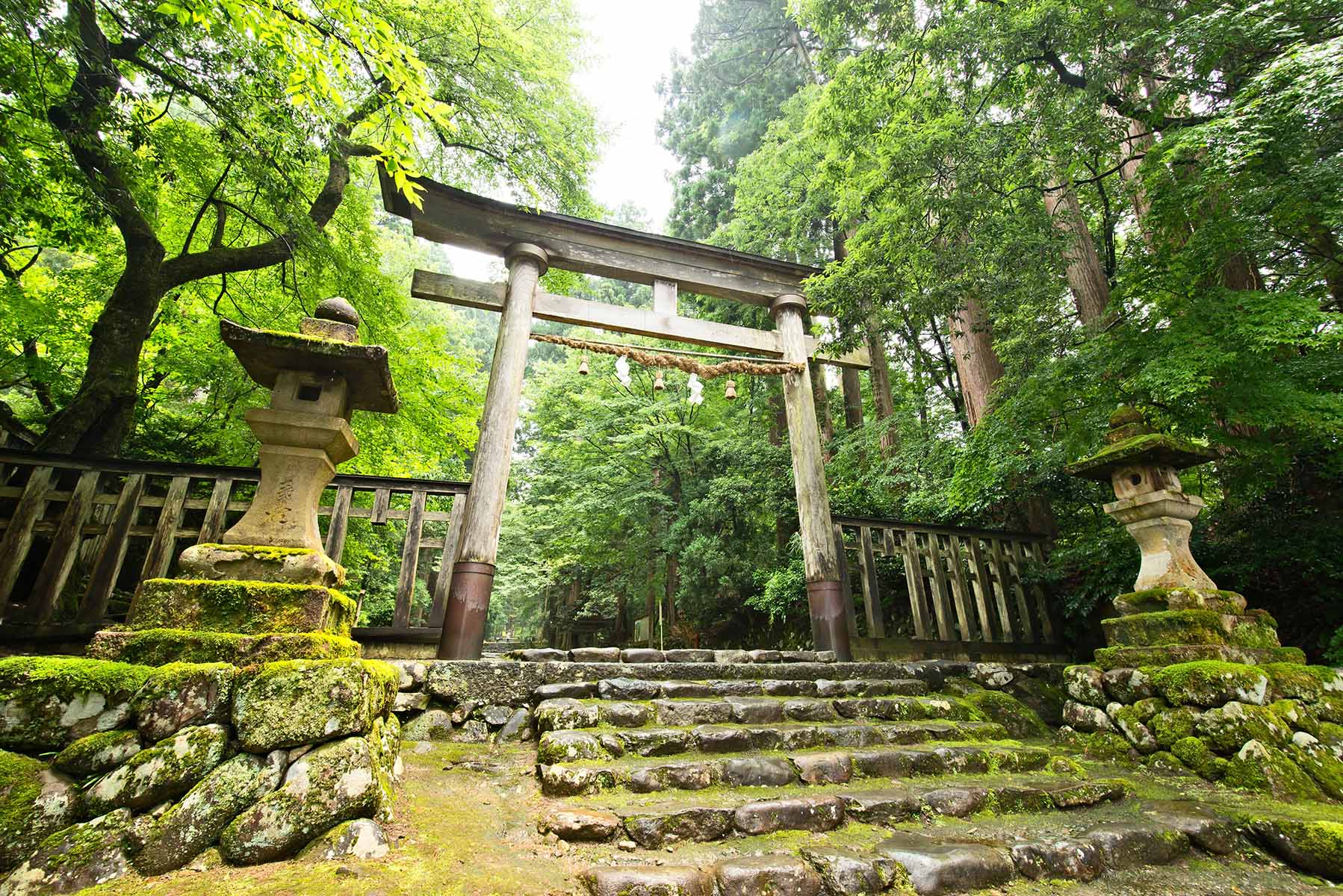Kii Peninsula / Kumano Kodo
Spiritual roots in mysterious mountains
Step on the cobblestoned paths of ancient pilgrimage routes made up of seven trails along the breathtaking sacred sites of Kumano Kodo a UNESCO World Heritage site since 2004.
Discover Kumano Kodo
Kii Peninsula lies three hours south of Kyoto with the Seto Inland Sea to the west, the Pacific Ocean south and east, and the valley of the Kiso Three Rivers and Ise Bay in the north. Home to Kumano Kodo region of lush mountains, impressive waterfalls, rugged coastline, soothing hot springs, and rich traditional culture.
Yoshino-Kumano National Park straddles parts of Mie, Nara and Wakayama prefectures. Much of the Yoshino-Kumano National Park overlaps with the sacred sites and pilgrimage routes in the Kii Mountain Range. The northern area of the park includes Mount Yoshino, Japan’s most famous cherry blossom-viewing location. In 1594, warlord Toyotomi Hideyoshi, held a luxurious cherry blossom viewing party here. Southern Kumano area contains three main shrines and a network of pilgrimage routes. Kumano Sanzan is the collective name Kumano Hayatama Taisha Shrine , Kumano Nachi Taisha Shrine (including adjoining Nachi Seigantoji Temple) and Kumano Hongu Taisha Shrine.
A most sacred spot for Shugendo, a syncretic mix of Buddhism and Shinto to fuse Japan’s indigenous worship of nature with the imported Tantric Buddhism and Taoism. This is the prime location to experience moments of quiet contemplation, commune with nature, and go deep into Japan’s spiritual history. Treading the same paths as ascetics, samurai, emperors, and monks. A mythical three-legged crow is the symbol of Japan’s national soccer team inspired by Kumano. At Kinpusenji temple “yamabushi,” or mountain monks, seclude themselves in the mountains and perform ascetic practices. Every April sins are confessed and cherry blossoms offered up as a ritual. Nachi Falls, which is itself considered a god, is 13 meters wide and 133 meters high, and is known as one of the tallest waterfalls with spray said to promote long life. Smaller shrines are scattered along to provide protection and guidance at 99 Oji Shrines.







